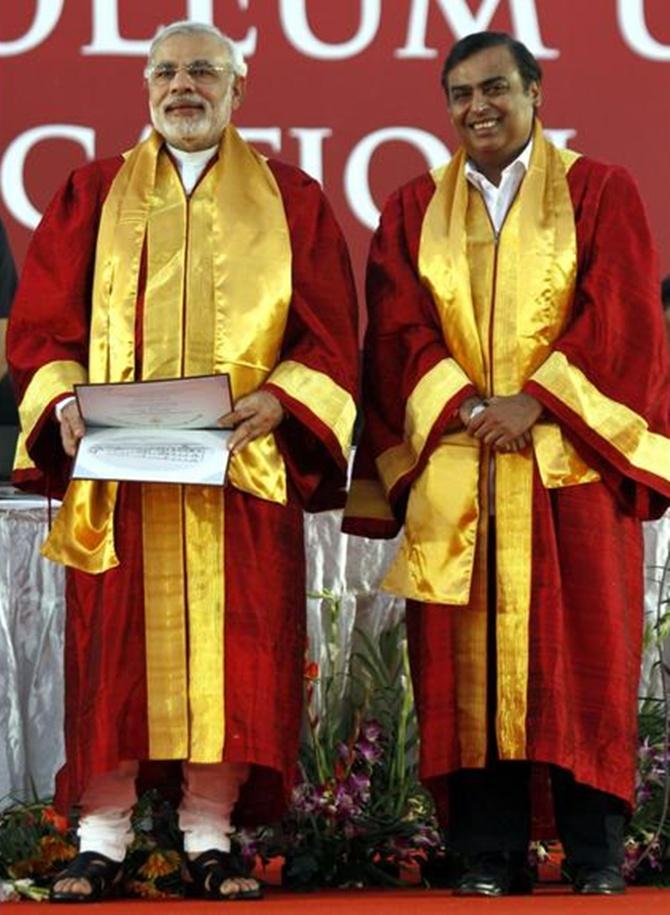
'If there is one thing that is true for the polls in 2014, it is that this is going to be the big economic election in India. The rise of an aspiring class is, in many ways, shattering many certainties of the old welfare State.'
'Make no mistake though -- big social welfare schemes are not disappearing in a hurry, but today the voters want more. The promise of a better life is increasingly more vital than the promise of free rice.'
An exclusive excerpt from 100 Things To Know And Debate Before You Vote by Hindol Sengupta.
Atal Bihari Vajpayee, the famed former prime minister of India from the BJP, was fond of telling a story of his tiff with Jawaharlal Nehru, the first prime minister of the country.
In the mid-50s, Vajpayee was a young MP in a Parliament, overwhelmed by the Congress and led by the charismatic Nehru himself. There was a debate on building The Ashoka Hotel, which was to be India's first luxury hotel.
In one of the debates, Vajpayee pointed out that the job of the government is to build hospitals, not hotels. Nehru, patrician and renowned for his erudition, was furious at the intrusion of a junior MP from a then virtually non-existent political party.
He snapped at Vajpayee, saying that the young man didn't understand anything and that hospitals will be made from the profits of the hotel. Vajpayee used to joke that that hotel is still loss-making and you can see how many hospitals have been built.
This anecdote ought to emphatically emphasise the BJP's Right of Centre, pro-market, pro-business mind, but it is actually not that simple.
The BJP is, for all practical purposes, India's Right, only sometimes not quite.
Excerpted from 100 Things To Know And Debate Before You Vote, by Hindol Sengupta, Rs 199, published by HarperCollins Publishers India, with the publisher's permission.
You can buy 100 Things To Know And Debate Before You Vote here!
Please ...
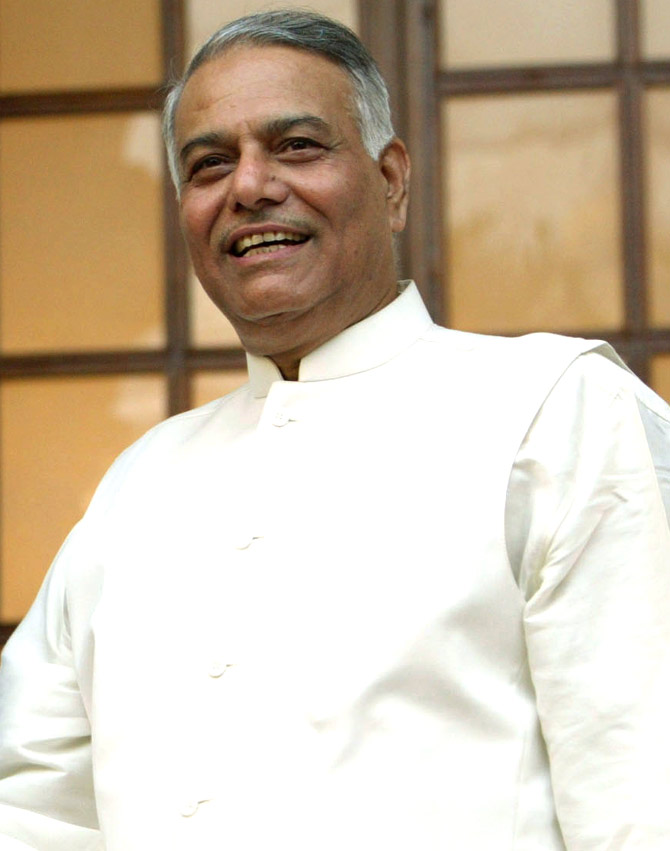
But the BJP has always had a tussle on its economic soul. The founding father of the Bharatiya Jan Sangh, the precursor to the BJP, Shyama Prasad Mookerjee, was a free market proponent. He was the industry minister in Nehru's Cabinet, and differed with Nehruvian socialism.
Economic freedom, Mookerjee argued, is one of the four key planks of nation building, along with national, political and personal liberty.
'Freedom consists, not only in the absence of restraint, but also in the presence of opportunity,' he famously said on November 27, 1937, at the convocation of Patna University.
When Mookerjee fell out with Nehru and started the Jan Sangh in 1951, it naturally became a champion of the market. The twist here is that the Jan Sangh and Mookerjee were closely associated with their ideological parent, the nationalist Rashtriya Swayamsewak Sangh, a strong advocate of swadeshi or homemade growth in every field -- from Indian culture and clothing to Indian companies.
The slogan for this home-grownism was given by the other stalwart of the Jan Sangh movement, the social reformer Deen Dayal Upadhayay, who spoke of antyodaya or caring for the poorest of the poor, a take-off from Mahatma Gandhi's famous advice -- 'Recall the face of the poorest and weakest man you have seen and ask yourself if this step you contemplate is going to be of any use to him.'
This has given economic thinking within the BJP, a history of confusion, but political manoeuvrability to pick and choose which part of its history it wants to tap into at what point.
Vajpayee, who left journalism to join politics, inspired by Mookerjee, clearly chose his mentor's path. As did the man who presented five Budgets for him, Yashwant Sinha, the former finance minister.
But in September 2012, at a Stanford University lecture, Sinha spoke of how his commitment to market-friendly policy making had only brought him grief. He took blame for the BJP's epic rout in 2004. 'Sometimes, I feel that I may have been responsible single handedly for the defeat of my party in the 2004 elections. I can never forget the lessons I learnt in that election,' said Sinha.
'During my tenure as finance minister, I had raised the prices of kerosene oil from Rs 2.50 to Rs 9.50; kerosene oil is used on a large scale in the rural areas for both lighting as well as cooking.'
'When I went campaigning in a remote village in my constituency, and asked an old woman for her vote, she said that that was fine, but was I not responsible for raising oil prices which had made her life difficult?'
Even arguably the BJP's topmost contribution to India's development 'building new highways' didn't help it win the 2004 elections. The BJP and its allies lost all 14 seats which it had won in 1998 along the arterial National Highway 2, connecting eastern and north western India.
Excerpted from 100 Things To Know And Debate Before You Vote, by Hindol Sengupta, Rs 199, published by HarperCollins Publishers India, with the publisher's permission.
You can buy 100 Things To Know And Debate Before You Vote here!
Please ...

So it was Nitin Gadkari, who became BJP president in 2009 after the party had lost two elections in a row, who brought in antyodaya as the motto in part, to counter two Congress mantras aimed at the poorest -- the Congress ka Haath Aam Aadmi ke saath (the hand of the Congress is with the common man) which trumped the BJP's 'India Shining' in 2004 and the Mahatma Gandhi National Employment Guarantee Act which promised at least 100 days manual labour for the rural poor.
But that was just the centre in Delhi. The core of the BJP's thought making was already shifting.
To try and understand the economic mind of the BJP, I took a ruler, a scale if you will, and drew parallel lines through the heart of India. The states that fall between these lines are Gujarat, Madhya Pradesh and Chhattisgarh.
They are what the BJP describes as their 'model states'. They are also some of the fastest growing states in India. Each of these states show off different aspects of the economic mind of the BJP -- Gujarat shows over all ability to fix many of the problems that plague India (power theft, urban squalor, creating business friendly environments), Madhya Pradesh, led by Chief Minister Shivraj Singh Chouhan, has been about the spectacular turnaround of a sinking, ramshackle state into the agricultural powerhouse clocking an 18 per cent growth in wheat production in 2011-2012, beating traditional agrarian giants like Punjab and Haryana and winning the annual award for best performance in agriculture for the year.
Chhattisgarh, under Raman Singh, which was created as a new state at the same time as Jharkhand, had Rs 49 more as per capita income than Jharkhand in 2004-2005, but in 2012 the gap had widened to Rs 6,733.
In a state plagued with Naxal violence, Chhattisgarh still managed to transform one of the biggest problem areas of governance -- the theft-ridden, corruption plagued public distribution system through which subsidised food is provided to the poor.
Just by plugging the holes (theft in many parts of the country are as high as 40 per cent of the food supplied) and bringing it down to under 5 per cent, Chhattisgarh managed to bring down malnutrition from 54 per cent in 2006 to 38 per cent six years later.
Both Chouhan and Raman Singh have now won a third term.
Excerpted from 100 Things To Know And Debate Before You Vote, by Hindol Sengupta, Rs 199, published by HarperCollins Publishers India, with the publisher's permission.
You can buy 100 Things To Know And Debate Before You Vote here!
Please ...
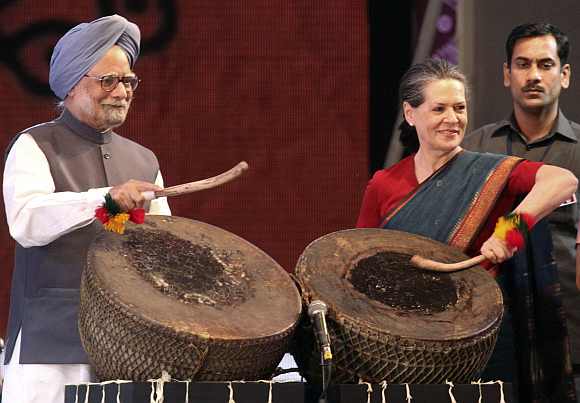
And as is becoming increasingly evident, it's the states that are beginning to influence BJP's economic thinking.
This is the key difference between the Congress and the BJP today. In the Congress, power still trickles down from party President Sonia Gandhi and son Rahul.
In the forthcoming elections, the economic outlook of the Congress will be shaped by leaders like P Chidambaram, Jairam Ramesh, Kamal Nath, Salman Khurshid and Kapil Sibal, each primarily a part of the Delhi-based central leadership.
This is not to say that there will not be inputs from central leaders. Yashwant Sinha says, if given a chance again, there are four things that will top his agenda -- bring down the number of central government-funded schemes from the current 147 to 10, have these schemes fully financed by the Centre and do away with the current method of joint financing with the states, and have stringent monitoring of the schemes.
"At the moment, around 100 schemes have a budget of less than Rs 300 crore. What we would apply are 10 really big ticket schemes in the areas of infrastructure, power, health and agriculture which will be on the basis of demand from the states, a bottom-up approach, instead of top down," he says.
Excerpted from 100 Things To Know And Debate Before You Vote, by Hindol Sengupta, Rs 199, published by HarperCollins Publishers India, with the publisher's permission.
You can buy 100 Things To Know And Debate Before You Vote here!
Please ...
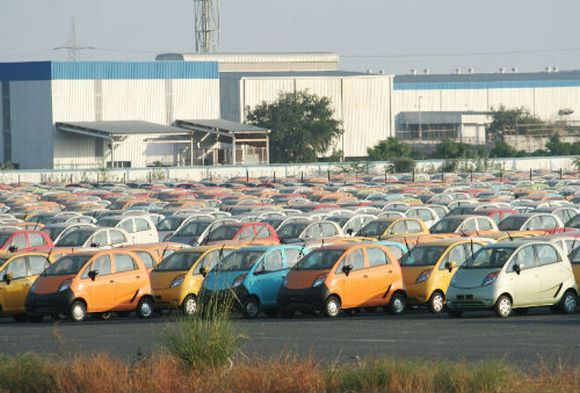
Both Sinha and senior BJP leader and former Union minister Arun Shourie also worry about the ballooning fiscal deficit and Sinha's formula to reduce the deficit to less than 3 per cent, hinges on what he calls "immediately implementable planning".
He suggests dismantling the current system of five year plans envisaged by the central Planning Commission and reducing its term to two years to be able to focus on what can be implemented quickly.
The idea of a planning commission with five-year terms was borrowed from the Soviets and dates to Nehru's first prime-ministerial term.
Shourie says he despairs at the use of monetary policy to curb inflation, which he says is like "using an axe to kill a mosquito".
"We are in this vicious cycle. Neglect inflation, fiscal deficit spins out of control, and we respond through increased interest rates. We have off-budget expenses each year of around Rs 200,000 crore (in fuel and fertiliser subsidies) and no one talks about that," says Shourie, who proposes a complete freeze on all hikes on government expenditure except in defence and internal security.
"We must restrict the use of monetary policy and focus on fiscal policy. The focus must be on efficient delivery."
Both Sinha and Shourie are also arguing against the Gadgil-Mukherjee formula of distribution of central funds to states.
Created in 1990 by social scientist D R Gadgil and Pranab Mukherjee, the incumbent President who was then deputy chairman, Planning Commission, as per the formula, of every Rs 100 sent to the states, 55 per cent is on the basis of population (larger the population, more assistance), 25 per cent on the basis of per capita income, 5 per cent on fiscal management and 15 per cent on special problems including disasters, crumbling urban spaces, etc.
Shourie and Sinha argue that post liberalisation, with states often taking their own economic destiny in their hands, the formula is irrelevant.
The influence of the states is all but visible in this thinking.
Six years back, Narendra Modi had already begun railing against the Gadgil-Mukherjee formula. He called it a formula that 'punished' fiscally responsible, innovative and aggressively growing states.
As a solution, he suggested that each state be allowed to submit three critical areas for assistance, instead of the Centre judging needs and allocating budgets accordingly.
With a Congress government at the Centre, predictably Modi's suggestions were dismissed, but if the BJP wins, expect the Gadgil-Mukherjee formula to be re-crafted, if not scrapped outright.
This will enable states to get a far greater control on their fiscal targets because demand for money will come from the states depending on their priority areas like health or education rather than population or per capita income.
Even on curbing fiscal deficit, the BJP knows that its states can show the way. According to a report by the PHD Chamber of Commerce in July 2012, most of the heartland BJP states had reigned in their deficit at less than 3 per cent. The report listed Chhattisgarh as 'excellent' with a deficit of 1.9 per cent of the state GDP, while Madhya Pradesh and Gujarat were dubbed 'very good' at 3 per cent.
Excerpted from 100 Things To Know And Debate Before You Vote, by Hindol Sengupta, Rs 199, published by HarperCollins Publishers India, with the publisher's permission.
You can buy 100 Things To Know And Debate Before You Vote here!
Please ...
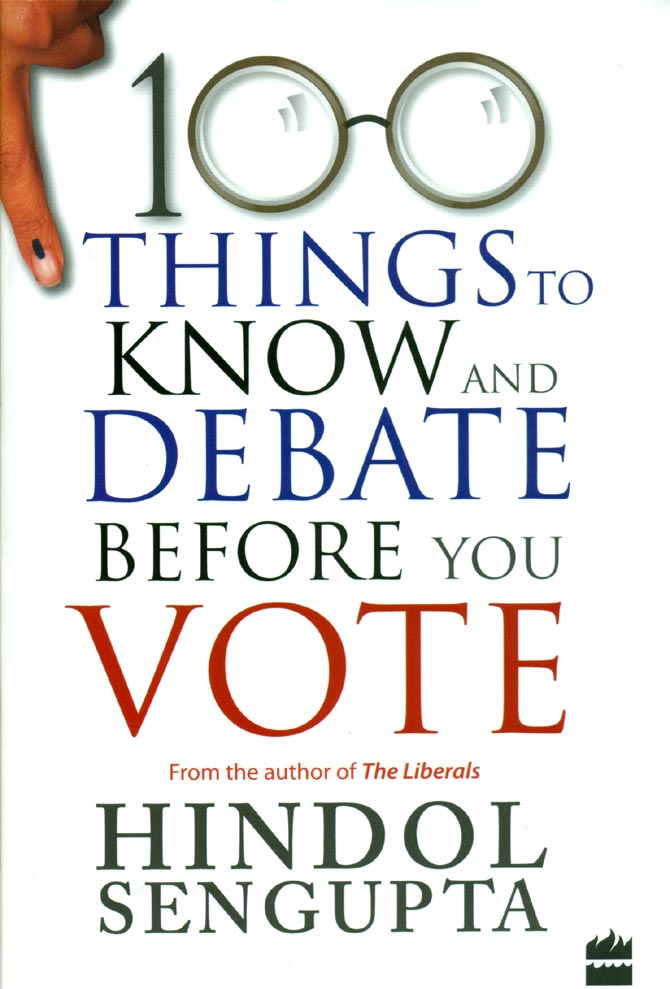
Even in this, note the whiff of the states: Madhya Pradesh has already started increasing the procurement price of wheat leading to bumper crops. In Madhya Pradesh, Chief Minister Chouhan has offered a revolutionary farmer loan at 1 per cent scheme and an extra Rs 100 per quintal to the central government procurement price.
Earlier in 2012, Chouhan explained the core of economic thought to me as "firm focus on agriculture and fulfilling the needs of the poorest."
Like Modi, he also has a successful scheme in providing free ambulance service to low-income pregnant women to boost girl child births in the state. But in a sense, Modi and Chouhan represents the two biggest influences on economic thought within the BJP -- Modi in the legacy of Mookerjee and Chouhan from Deen Dayal Upadhayay.
The final radical pillar of BJP economics these days is Subramanian Swamy. Swamy says he is pro-FDI in retail but with strings attached. "I believe in parity," says Swamy. "I am happy to welcome in, say WalMart, if the US allows Indians workers to go work in their infrastructure in their country. Otherwise, why should their low cost capital be applied in India to earn profit while India's surplus labour cannot earn from their country?"
Basically this means he is against FDI in retail, at least for all practical purposes.
Swamy, whose early mentors and inspirations were Simon Kuznets, Paul Samuelson and Milton Friedman, have brought what can be called the idea of nationalist capitalism to the Jan Sangh in the 1970s -- a free market swadeshi, if you will.
It was based on economic liberalism, complete breakaway from Nehruvian socialism and focuses on building Indian infrastructure and enterprises, including increased focus on agriculture.
Even today he says linking Indian rivers -- one of former prime minister Vajpayee's pet projects -- and extensive irrigation for agriculture are the two projects closest to his heart. "We have forgotten the art of self sufficiency," he says.
The BJP's prime ministerial candidate Narendra Modi has now given us a vision of an era of continuous construction, as it were, from bringing bullet trains to building 100 new cities -- but the big question is where is the land and the money going to come from?
Excerpted from 100 Things To Know And Debate Before You Vote, by Hindol Sengupta, Rs 199, published by HarperCollins Publishers India, with the publisher's permission. AND
You can buy 100 Things To Know And Debate Before You Vote here!
...
Click on MORE to see another PHOTO feature...